
Lvliang Konaklamanızı Bulun
En yeni fiyatları ve müsaitlik durumunu kontrol etmek için seyahat tarihlerinizi girin
Daha fazlasını görüntülemek için yukarı kaydırın
Filtrele:
Otel yıldız puanı
≤2345
Popüler Filtreler
Muhteşem 4,5+Harika 4,0+Çok İyi 3,5+İyi 3,0+Sizin için 913 adet Lvliang oteli bulduk
En yeni fiyatları görmek için seyahat tarihlerinizi seçin.
En Popüler
En Düşük Fiyat
Şehir Merkezine En Yakın
En İyi Yorum Alan

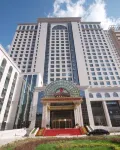

Otel Lishi District,Lvliang bölgesine yakın
XXiaoran-BJ 2023.10.16
因為酒店不禁煙,所以提前打電話問了是否能保證無煙房間真的沒有煙味,本人對煙味過敏所以非常在意這個問題。接電話的客服説我們到了可以先看房間,不行可免費退,這樣的服務態度值得贊。房間其實不是真正的套間,而是一間超大房間,建議酒店把房間名稱修改一下。
衞生間的簾子上都是黴點,已經成片了,酒店説會逐步換掉。換簾子需要很長時間嗎?都污染成那樣了,房間就不應該開放給客人住。
地下停車場走到電梯需要上一個陡坡,對小孩及長者來説有些危險,帶行李箱的真費勁。
Excellent
223 yorum
4.4/5
Gecelik
1.650 ₺
tutarından başlayan fiyatlar

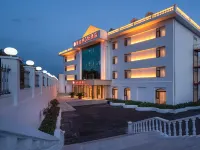
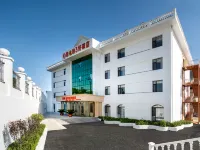
Otel Lishi District,Lvliang bölgesine yakın
AAnonymous User 2023.10.05
The facilities are complete and parking is convenient; it is very close to the highway exit, which is very suitable for self-driving and staying overnight; the choice of dining outside is not convenient, and the surrounding area is being planned and constructed, and I believe it will be very good in the future; there are four people inside and outside the front desk, three of whom are chatting, and one is receiving guests. They are cold-faced and hateful, cold and cautious, and love to answer and ignore, as if they owe her 80 cents. Especially when we were required to take photos according to regulations, the farmers in the village were more gentle than her when they shouted at the livestock. This is the most unprofessional hotel receptionist I have encountered in the same price hotels in more than ten days, from Inner Mongolia to Xinjiang, and then to Gansu. In the nearly ten minutes of checking in, we did not feel any respect that the hotel reception should have, not to mention the positive comments such as ”warmth and hospitality” given on the Internet. In addition to disappointment, it is regret-why did you choose your hotel among hundreds of hotels in Luliang? This is our third stay in Luliang by self-driving. Remember: No matter how good your hardware is, you will never see each other again in this life!
Outstanding
265 yorum
4.7/5
Gecelik
810 ₺
tutarından başlayan fiyatlar
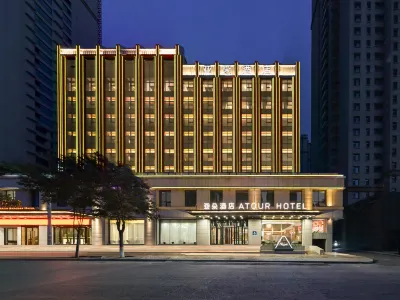


Otel Lishi District,Lvliang bölgesine yakın
GGuest User 2024.08.10
The breakfast is rich, the nutrition is balanced and the food is very good. The room is large, very clean, the bathroom is separated from wet and dry, the floor-to-ceiling windows can see the road, the waiter in the lobby is very good, especially the feeling of being at home. Stay here next time.
Outstanding
743 yorum
4.8/5
Gecelik
1.230 ₺
tutarından başlayan fiyatlar

Bunları Tercih Edebilirsiniz
Kahvaltı Sunan Otellerİki Adet Tek Yataklı Odası Olan Oteller1 Çift Kişilik Yataklı OtellerYüzme Havuzlu OtellerÜcretsiz İptal İmkanı Sunan Oteller
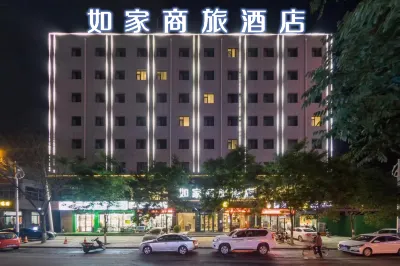


Otel Lishi District,Lvliang bölgesine yakın
AAnonymous User 2024.05.03
There is a self-service desk in the front desk area, free masks, head ropes, disposable toilet pads, disposable razors, candy, and biscuits. The elevator needs to be swiped to enter and is very safe. The front desk staff was very welcoming and polite. The room was clean and tidy and cleaned. The bathroom is separated from wet and dry, the mattress is moderately firm, the 4 pillows are very comfortable, and the room sound insulation is not bad. There are disposable slippers and the room is equipped with free mineral water.
Outstanding
742 yorum
4.8/5
Gecelik
925 ₺
tutarından başlayan fiyatlar



Otel Lishi District,Lvliang bölgesine yakın
GGuest User 2023.12.24
The hotel set during the exam was very difficult. I thought I could live. The result was amazing on the day of the check-in. As soon as I entered the lobby, the front desk staff took the initiative to say hello. I knew that we were taking the exam and prepared pens and badges for the candidates. Because of the late arrival, Also intimately asked if there is no meal to eat, the restaurant prepared free noodle soup, into the elevator found that you need to swipe the room card to get to the designated building security is great! The number of words is not enough. In short, it is recommended.
Outstanding
113 yorum
4.7/5
Gecelik
677 ₺
tutarından başlayan fiyatlar
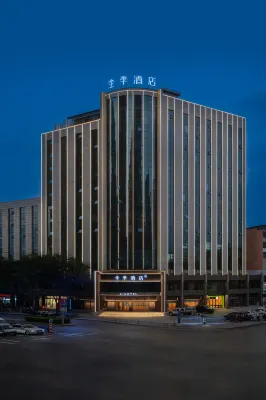


Otel Lishi District,Lvliang bölgesine yakın
AAnonymous User 2024.08.30
我剛剛結束了在貴酒店的短暫停留,在此,我不得不表達我對貴酒店提供的卓越服務和舒適環境的由衷感激,酒店就在喬家溝十字路口,周邊餐飲娛樂場所步行就可以到達,出行便利,後院還有充電樁,非常棒,真的很奈斯,房間內的現代化設施一應俱全,包括高速Wi-Fi、智能電視、迷你吧等,一切都為客人的舒適體驗考慮周全。酒店還有健身房,真的是賓至如歸,在這裏,我感受到家的温暖和度假的愜意,有機會我們有緣再見
Perfect
85 yorum
4.9/5
Gecelik
1.097 ₺
tutarından başlayan fiyatlar



Otel Lishi District,Lvliang bölgesine yakın
GGuest User 2024.02.18
When I first arrived at the hotel, I was shocked by the environment at the entrance. There was a ruin opposite, and I felt like I was living in a very remote place. Fortunately, it was not far from the mall, and it was just a starting price.
There are ground parking lots and underground parking lots. It is best to park on the ground if there is a place on the ground. I went down once and it was too gloomy, and there were a lot of machines.
The front desk service was very good and enthusiastic, and the problem could be solved in time by calling, which might be the most comforting point.
The breakfast was hard to say. The meal started at 7 o'clock, and there was nothing when I went there at 7:30, not even chopsticks. Although the waiter was trying to replenish it, the replenishment was not enough to consume it. In the end, I ate a lot of cold food, which made me feel uncomfortable. I asked and was told that it was because they received a tour group at 6:30, so they couldn't let the people behind them go without food. It should be expected based on the accommodation situation.
Outstanding
546 yorum
4.8/5
Gecelik
1.063 ₺
tutarından başlayan fiyatlar

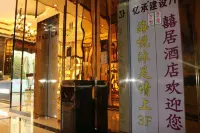

Otel Lishi District,Lvliang bölgesine yakın
Bbaixuejie1999 2024.07.28
The room was clean and tidy, the service was good and the breakfast was good!
Excellent
80 yorum
4.3/5
Gecelik
834 ₺
tutarından başlayan fiyatlar



Otel Lishi District,Lvliang bölgesine yakın
GGuest User 2023.07.16
This hotel is equipped with advanced equipment, the rooms are clean and clean, the environment is very good, the prime location, and the service is thoughtful. Especially the free gift is fully prepared
The most important thing is that the big sisters who clean the room are even more respectable.
Excellent
126 yorum
4.4/5
Gecelik
1.049 ₺
tutarından başlayan fiyatlar



Otel Lishi District,Lvliang bölgesine yakın
GGuest User 2023.01.30
The room is quite big, but the facilities are too bad, there is no basic tea and coffee, the room is not warm, the two bottles of mineral water are also very small, breakfast is not good, there is no toothpicks on the table, just give a plate. The price is higher than the Northern Hotel, but the quality is lower than the Northern Hotel. When booking the room, there seems to be a bathtub, but there is no.
Outstanding
29 yorum
4.6/5
Gecelik
696 ₺
tutarından başlayan fiyatlar
Seyahatseverlerin beğendiği en iyi Lvliang otelleri seçkisi
Tümünü görüntüle
Geçtiğimiz ay en çok rezervasyon yapılan bu oteller arasından seçim yapın
No.1
4.8/5
554 yorumHanting Hotel Lvliang College Branch
Lishi District, Lvliang Otelleri
"Classy environment""Friendly front desk staff"
Fiyatları görüntülemek için tarihleri seçinNo.2
4.8/5
151 yorumHanting Hotel (Lvliang Wenshui South Second Ring Road)
Wenshui Otelleri
"Clean and tidy""Great rooms"
Fiyatları görüntülemek için tarihleri seçinNo.3
4.6/5
145 yorumLanting Business Hotel (Wenshui North Second Ring Road)
Wenshui Otelleri
"Clean and tidy""Classy environment"
Fiyatları görüntülemek için tarihleri seçinNo.4
4.7/5
312 yorumLijia Courtyard, Lukou Ancient Town, Linxian County
Lin County Otelleri
"Delicious breakfast""Great amenities"
Fiyatları görüntülemek için tarihleri seçinNo.5
3.1/5
9 yorumLuliang Jinpeng Hotel
Lishi District, Lvliang Otelleri
"Good Location"
Fiyatları görüntülemek için tarihleri seçinNo.6
4.4/5
53 yorum臨縣磧口陳家小院
Lin County Otelleri
"Clean and tidy""Great service"
Fiyatları görüntülemek için tarihleri seçinNo.7
3.9/5
66 yorumYilongwan Leisure Club
Xing County Otelleri
"Good Location"
Fiyatları görüntülemek için tarihleri seçinNo.8
4.3/5
4 yorumLinxian Lukouzhen Wohushan Lu Station
Lin County Otelleri
"Good Location"
Fiyatları görüntülemek için tarihleri seçinNo.9
4.8/5
320 yorumLinxian Kelaixuan Hotel
Lin County Otelleri
"Great service""Convenient location"
Fiyatları görüntülemek için tarihleri seçinNo.10
4.7/5
464 yorumFenyang Fuji Hotel · Selected
Fenyang Otelleri
"Classy environment""Great amenities"
Fiyatları görüntülemek için tarihleri seçinLvliang şehrinde leziz bir kahvaltıyla güne uyanın
Tümünü görüntüle
Bu şehirdeki en beğendiğimiz otellerden birinde lezzetli bir kahvaltıyla güne başlayın
Royal Hotel
Xiaoyi Otelleri
The Royal Hotel is a great choice for guests looking for accommodation in Xiaoyi, having been recently renovated in 2021. The hotel offers easy access to Xiaoxi Railway Station, just 3km away. The nearby area boasts an abundance of attractions including Xiaoyi Library, Shanxi Dream Sea and Mingdi Hot Spring. This hotel makes a great place to kick back and relax after a long day of sightseeing. Guests of this Xiaoyi hotel can make use of the parking facilities. According to our guests, the location of this hotel is one of the best around. For guests traveling on business, this hotel is consistently one of the most popular choices.
4.6/5
Outstanding276 yorumGecelik başlangıç fiyatı: TRY 1607
Pengfei Guobin Hotel
Xiaoyi Otelleri
The Pengfei Guobin Hotel is an ideal spot for travelers wanting to discover the city. Visitors to Xiaoyi will find that the Pengfei Guobin Hotel is a fantastic accommodation choice. The hotel is conveniently located a short 5km drive from Xiaoxi Railway Station. This hotel is located near many of Xiaoyi's attractions including Xiaoyi Shadow and Puppet Art Museum, Mingdi Hot Spring and Zheng Xing Park (Southwest Gate). This hotel makes a great place to kick back and relax after a long day of sightseeing. Guests of this Xiaoyi hotel can make use of the parking facilities. When it comes to Xiaoyi hotels, the Pengfei Guobin Hotel is highly regarded for its excellent facilities. This hotel is particularly popular with those traveling on business.
4.7/5
Outstanding223 yorumGecelik başlangıç fiyatı: TRY 1483
Meitan Hotel
Liulin Otelleri
The Meitan Hotel provides a great place for travelers to relax after a busy day. The Meitan Hotel offers a pleasant stay in Liulin for those traveling for business or leisure. The hotel is only 3km from Liulin South Railway Station and 45km from Lvliang Airport, giving guests a number of convenient transportation options. Famous local attractions Shuangta Temple, Xiangyan Temple and Qinghe Culture Sculpture Park, can all be reached with a short walk. This hotel makes a great place to kick back and relax after a long day of sightseeing. For those driving themselves, parking is provided on site.
4.2/5
Very Good57 yorumGecelik başlangıç fiyatı: TRY 1573
0.0/5
Gecelik başlangıç fiyatı: TRY 1383
Yatuo Hotel Luliang Jiaocheng South Ring Road
Jiaocheng Otelleri
Yatuo Hotel Luliang Jiaocheng South Ring Road is located in Tianning Town, Jiaocheng County, Luliang City, Shanxi Province, Yingxin Shuangxi City, Building 2, Building 1, opposite to Zhongding, the hotel belongs to Jiaocheng County, Luliang City. The hotel adheres to the characteristics of Yado with mobile reading and local photography, uphels the product philosophy of "humanity, warmth and fun", and provides customers with warm and comfortable services. In Xiangzhao (restaurant), common language (meeting room), bamboo house (24-hour reading space), sweat out (gym), dust out (laundry room), home (guest room) into the design of natural, simple, quiet, warm design style, all carefully elegant, unique. The hotel has different categories of room types, equipped with a full set of high-end toiletry products, high-density bare cotton bedding and deep sleeping mattresses, just to create a dream heart travel, live up to the accompanying. The hotel continues the humanistic spirit and quality of the original intention, a collection of beautiful urban space and lifestyle, to provide each guest with a new social living space. At the Hotel, there is always unexpected warmth.
5.0/5
Perfect5 yorumGecelik başlangıç fiyatı: TRY 1025
Dong Xing Grand Hotel
Xiaoyi Otelleri
The Dongxing Grand Hotel (Dongxing Dajiudian) is conveniently situated to the north of Xiaoyi Municipal Government building, adjacent to several shopping malls. Guests enjoy convenient access to the transportation network.This Xiaoxi hotel houses a variety of rooms ranging from Single Rooms to Presidential Suites all with mini bar, domestic direct dial and central A/C. Guests can play in the games room, surf the Wi-Fi or work out in the gym or tennis courts in their free time.
4.5/5
Excellent90 yorumGecelik başlangıç fiyatı: TRY 892
Xingxian Vienna Smart Hotel
Xing County Otelleri
The room was clean and the facilities were well equipped. The rest at night was very quiet and the breakfast was very rich. The experience is very good, booked a river view room, overall very good
4.6/5
Outstanding92 yorumGecelik başlangıç fiyatı: TRY 996
Yuhe Garden Hotel
Fenyang Otelleri
The Yuhe Garden Hotel provides a great place for travelers to relax after a busy day. The Yuhe Garden Hotel offers a pleasant stay in Fenyang for those traveling for business or leisure. The hotel is approximately 17km away from Fenyang Railway Station. Fenyang Railway Station is the closest option for those who prefer to travel by train, approximately 17km away. There is no shortage of things to see in the area, with the Jiajiazhuang Folk Customs Zoo, Jiajiazhuang Tourism Area and Sanjin Folk Culture Experience - Jia Street all nearby. When guests have some time on their hands they can make use of the onsite facilities. This Fenyang hotel provides parking on site.
4.4/5
Excellent54 yorumGecelik başlangıç fiyatı: TRY 1321
Hotels in Bingxing Manlan
Fenyang Otelleri
特別特別特別好的一次住宿體驗,必須好評,前台很耐心熱情的幫我查詢附近的旅遊路線,介紹當地的景點,態度非常好,房間也很不錯!乾淨衞生。而且酒店本身也很漂亮,滿滿的山西特色,因為是汾酒故鄉,隨處都可以看到酒文化。
4.8/5
Outstanding84 yorumGecelik başlangıç fiyatı: TRY 1778
Lan'Ou Shangpin Hotel
Xing County Otelleri
房間舒適 環境也不錯 一走酒店就聞到了香薰的問道特別高級,服務非常好,很熱情,房間乾淨寬敞明亮,設施方便,住的很舒適,滿意下次還會再來
4.7/5
Outstanding84 yorumGecelik başlangıç fiyatı: TRY 906
Sizin gibi seyahatseverlerin Lvliang otelleriyle ilgili düşüncelerine göz atın
Tümünü görüntüle
İdeal konaklama yerini bulmanıza yardımcı olması için gerçek seyahatseverlerin özgün puanlarını ve yorumlarını keşfedin
4.9/5
Perfect
GGuest UserThe hotel is on the side of the road near the Lijiashan attractions, and it is very stylish and very new. Entering the lobby, clean and warm. We live on the second floor, the room is clean and tidy, the bedding is clean, it is new. Disposable slippers, face towels, and disposable bath towels. Of course, there are traditional towels and bath towels for guests to choose from. Very thoughtful and very intimate. There are disposable water cups and cover. The hair dryer is very windy. The bathroom is separated from wet and dry, providing brand shampoo and body soap. The toilet is smart, and the toilet lid is warm and very comfortable. The room is intelligent and Xiaodu provides all services.
It is worth mentioning that the boss is a very real, very warm and warm person. When we arrived, it was nearly three o'clock in the afternoon. The boss was worried that the hotel would get off work, and he said that he would provide us with buckets of instant noodles for free, let us first cushion our hunger, and go to the restaurant to eat at night. Seeing that we didn't want to eat instant noodles, he quickly contacted a restaurant and learned that it was open all day during the National Day, so he quickly showed us the way. The boss also said that if we go to the ancient town of Lukou, the car can't drive in, and we need to take a shuttle bus in the parking lot. If we want to, he can also send us there, and then pick us up at night, it is really very intimate. Later, when I came back to play at night, the child wanted to eat instant noodles, and the front desk really provided it for free. In addition, bottled water in the room is also provided for free, not enough for free renewal, and a few bottles can be needed. Breakfast is also very rich. There are cold dishes and hot dishes, two kinds of porridge, eggs, cantaloupe, local fresh dates, are very delicious.
4.8/5
Outstanding
GGuest UserFacilities: The room has a good space layout, good layout, complete facilities, very easy to use, the bed is very good to sleep, the environment is quiet and sleepy;
Hygienic: The room is clean and hygienic, separated from wet and dry, does not interfere with each other, hot water is abundant, hand sanitizer, shower gel, shampoo, disposable toilet cover, face towel are all available;
Environment: The location of the hotel is very good, in the city center, the dining shopping center is very close, very close to the city museum and the Lotus Pond Park, the environment is very pleasant.
Service: A few beautiful women at the front desk of the hotel were generous and thoughtful. They also gave us a free breakfast coupon. When I arrived at the room, I was very pleasantly surprised to see the red roses on the bed. I felt very warm and warm; The breakfast is very rich and delicious, and it is very special. The staple food such as Xiaolongbao, pumpkin cake and milk soy milk millet porridge are all delicious, very warm and warm. All in all, friends who travel to Luliang on business will not regret staying here, it is worth it. Here, praise and thanks to the beautiful women, restaurants and floor staff serving the hall 👍👍👍🌹🌹🌹
I DO Garden Hotel (Lvliang Lishi Century Plaza)
Lishi District, Lvliang Otelleri
Gecelik başlangıç fiyatı: TRY 586
4.6/5
Outstanding
GGuest UserWe went there for the courtyard. When we arrived, we took some photos of the snow pears, apples, and peony flowers in the courtyard. The dates were not ripe yet. The B&B showed Courtyard No. 1, where the owner lived, but I booked Courtyard No. 2. The owner said that Courtyard No. 1 only had family rooms, which were more expensive and happened to be vacant, so I immediately paid the difference and moved in. The family room was very spacious and clean. I liked the layout of their bathroom. We walked into the village like **. When we saw corn, we asked the owner's wife to help cook it. When we saw freshly picked tomatoes, we immediately washed and ate them. We were not polite. These were all grown by the owner himself. The boss was nice and didn't care. It was a pity that the boss was building a new cave and didn't help us cook. The boss's mother was even more generous. She gave us a bag of plums when we left.
4.6/5
Outstanding
GGuest User從位置上看,去李家山、磧口古鎮和西灣村感覺住在磧口古鎮會方便一些。從物價上看,住在這個民宿要經濟一些,比如磧口古鎮吃大鯉魚180元/斤,一個菜均價30+,在民宿不遠處農家味道吃150元/斤,一個菜均價20+。多説一句,如果計劃來壺口的朋友還是在吉縣縣城吃黃河大鯉魚吧,68元/斤,還是不要在磧口古鎮作肥羊了。再説回這個民宿,房間很大,洗漱用品都是一次性的,老闆和老闆娘也很熱情,入住和退房都幫忙拎箱子,去磧口古鎮和西灣村還幫忙接送,走的時候還送了4瓶水。在這個地方民宿有這種條件真心不錯的。不過入住兩天,沒人收拾房間和清理垃圾;每天清晨樓下會有巨大噪音,好像是垃圾清運車。入住時候基本滿房,亂喊亂叫聲,半夜11點還在唱K,隔壁看電視、打噴嚏的聲音,也算一種特別的體驗吧。最後上傳幾張李家山的照片,真正古民居,原汁原味,沒有商業街,沒有店鋪,沒有飯館,不像磧口古鎮全是推銷商品的,個人認為李家山是最值得去的景點。
4.3/5
Excellent
JJohnThere are not many hotels in Shilou that accepts foreigners, the Jufutang Hotel does. Being the first non-Chinese to stay, it took about 20 minutes to sort all the registration, which is fine…the staff were friendly and kind. The hotel itself is fine — comfortable bed, clean. The negative is the breakfast buffet…completely tasteless, where you severe the food upon metal trays found in prisons or hospitals. Would stay again if ever passing through Shilou, skipping the terrible food, eating at any of somewhat nearby excellent restaurants.
4.3/5
Excellent
乾淨衞生,經濟實惠,老闆熱情,服務周到,出行不錯之選。
3.7/5
GGuest UserThe location is quite biased, the facade looks like a small hotel, the inside is quite big; there is a water dispenser in the corridor, there is hot water, don't worry about the kettle in the room is not hygienic, very good. The design of the bathroom spray head is too bad, very small and very low; the design of the faucet is unreasonable, the water is not open; it is not good to not configure the hair dryer; The TV has no signal and can't be seen; the headlights and headlight switches are not well designed at the bedside. I checked out the next day and found out that I thought the headlights were bad.
3.3/5
GGuest UserVery good, relatively hygienic, very good attitude!
2.8/5
GGuest User設施:住在四樓,還可以,就是太高了,晚上不知道什麼車經過,震動特別大,嚇得我以為地震了😅
衛生:還可以,給了洗漱用品,衛生間也OK
環境:周圍好像是一個工地,我那個窗戶可以看到外邊
服務:態度還可以,還行。
Seyahatseverler Lvliang cazibe merkezleriyle ilgili neler söylüyor?
Lvliang şehrindeki görülmeye değer yerleri keşfedin ve daha rahat gezmek için yakında bir otel seçin
Ancient Qikou Town
导导游小加Unexpectedly, this place retains the most simple charm, known as the "first town of Jiuqu Yellow River", the ancient town is built by mountains and rivers, the Ming and Qing buildings are scattered, and there are shops on both sides of the street, as if passing back to that bustling era. 🕙 Business hours: open all day
Qikou Scenic Attraction
滇滇国剑客Qikou is a place with early human activities, people have created a long history here, but also created excellent culture, so the Qikou scenic spot occupies an important place in the hearts of tourists.
Pangquan Groove
首首席监理Shanxi Pangquangou National Nature Reserve is located at the junction of northwestern Jiaocheng County and northeastern Fangshan County in Shanxi Province, located in the middle of the Luliang Mountains. It is a wild animal and plant nature reserve. The main protected objects are the brown horse chickens and their habitats. The protected area includes: "Yunding Sunrise", "Longquan Waterfall", "Benjia Shenghui", "Wenyuan Wancui", "Ancient Tree Pagoda", "Tianmen Ruiqi", "Phoenix View Tower", "Stone Pig Cruel", "Fairy Stone" and other natural landscapes.
Xinghua Village
滇滇国剑客Whenever you hear and see this name, you can recall the ancient poem "ask the restaurant where to find, the shepherd child Yao refers to the village of Xinghua", and the history of the civilization of Xinghua has a history of more than 1,000 years, which can be described as a deep ancient charm.
Qianlijia Mountain
CchenweiwenLijiashan Village, a famous Chinese historical and cultural village, is located five kilometers south of the Yellow River bank of Lukou Town, Linxian County, Shanxi Province, hidden in the depths of the mountains, empty and elegant. It is one of the surrounding villages that led to the development of Lukou when it was prosperous. Lijiashan Village has a total of nine floors and ninety-eight courtyards of ancient residential groups, is the fourth batch of famous Chinese historical and cultural villages, the first batch of traditional Chinese villages, excellent landscape villages. Founded in the Ming Dynasty, according to the records of the Li family genealogy book, Li's ancestor Li Duan arrived here during the Chenghua period of the Ming Dynasty (1465-1487 years), and later the Li family reproduced in Lijiashan Village for generations, and the middle of the Qing Dynasty gradually prospered, including the two rich owners of the East and West. Later, Li's family also intervened in the business, became rich after the construction of civil construction, in the village built a large number of buildings. The village retains a variety of different houses, including luxury Qing houses and ordinary cave caves, which contains loess customs and rich Yellow River culture, which is a valuable material for studying ancient folk customs in China.
North Wudang Mountain
AAnonymous UserThe scenery is beautiful, the Taoist holy place, not very tired, one and a half hours capped, one hour down the mountain, plus taking pictures, a total of 3 hours, down the mountain there is the longest slide in Shanxi Province, and there is a gravity-free car, the experience is very good!
Fenjiu Liquor
首首席监理The panoramic view of China's wine city is 7 kilometers long, about 15 square kilometers, and the whole project is divided into two major construction areas outside the city. The city is composed of five parts: one is a one-stop production line of grain silos, songmaking, brewing, storage, blending and assembly with an annual output of 100,000 tons of liquor; Second, the world wine expo center, trading center and other marketing places; third, can store 50,000 tons of finished wine in the through-through shelf warehouse; fourth, power plant and sewage treatment plant; fifth, can store 150,000 tons of original wine in the city wall three-story wine storage hole. There are five related sectors outside the city: First, the 60,000 tons of health wine project of the wine group; Second, the thousand-year-old workshop tourist area of wine; Third, the headquarters base of wine dealers and wine culture street; Fourth, the recycling of wine industry products, including 100,000 mu of high-quality winemaking sorghum base and wine grain feed and biogas power generation projects; fifth, wine industry related industries, including ceramic bottles, glass bottles, color printing, packaging and railway station logistics projects. The exterior wall of China's wine city is majestic, but the inside is hollow, enough to be three or four floors high, is a warehouse for storing wine. On the wall is a tour passage around the city, which can be parallel with two tour buses. The style of all buildings in China's wine city park is antique outside, modern inside, and the appearance is mainly imitated the architectural styles of Song, Yuan, Ming and Qing, which shows the historical and deep cultural heritage of the wine.
Jiajiazhuang Tourism Area
MM23***12Overall, it is great value, online ticket purchase is very cost-effective, cheaper than the scene; parking is convenient, there is no parking fee, you can park in the village, and the scenic service staff has a good attitude. I went more than 2:00 pm, it is best to go to the amusement park first, then go to the light meeting, at 6:00 pm, the light meeting integrates ancient and modern, the theme is distinctive.
Hexagrams Mountain
SSanjin620801Lushan is located in Luliang Jiaocheng, Shandong Province, 3 kilometers north of Jiaocheng County. Lushan is named for the same phenomenon as the peaks. The pine and cypress trees are full of mountains, evergreen all year round, and there are many mysterious folk legends. They are regarded as natural Taoists and have deep cultural heritage. There are Tianning Temple, Cast Iron Monument, Pilu Pavilion, Tang Yu and other attractions founded in the first year of Tang Zhenguan (627). It is a three-Jin tourist attraction integrating natural scenery and thousands of ancient temples. Song Dynasty calligrapher Mi Yan made it into the ranks of the three mountains and five mountains, known as the "first mountain".
Lvliang ile İlgili Sık Sorulan Sorular
Popüler Lvliang otelleri hangileri?
Lvliang birçok popüler otel içeriyor. İster iş ister tatil seyahatleri için Hanting Hotel Lvliang College Branch, Hanting Hotel (Lvliang Wenshui South Second Ring Road) ve Lanting Business Hotel (Wenshui North Second Ring Road) ideal birer otel seçimi. Lvliang otelleri için ortalama fiyat ne kadar?
Lvliang otelleri için hafta içi ortalama fiyat 840 ₺, hafta sonu (Cuma-Cumartesi) ortalama fiyat ise 852 ₺.Lvliang için hangi lüks oteller öneriliyor?
Lvliang, farklı stillere sahip birçok lüks otel içeriyor. Örneğin Royal Hotel ve Pengfei Guobin Hotel çok popüler. Hangi Lvliang oteli kaliteli kahvaltılar sunuyor?
Royal Hotel,Pengfei Guobin Hotel,Atour Hotel, Central Park ve Luliang kaliteli kahvaltı sunuyor. Güne enfes bir kahvaltıyla başlayın!Çocuklarla seyahat için hangi Lvliang otelleri öneriliyor?
Lijia Courtyard, Lukou Ancient Town, Linxian County, Harbour Hotel ve ailece seyahat etmeye çok uygun birer seçenek. Çocuklarınızla ve ailenizin diğer üyeleriyle seyahat etmenin tadını çıkarın!Hangi Lvliang otellerinde fitness olanakları sunuluyor?
Hanting Hotel Lvliang College Branch, Hanting Hotel (Lvliang Wenshui South Second Ring Road) ve Lanting Business Hotel (Wenshui North Second Ring Road) fitness olanakları sunuyor. Seyahat ederken de formda kalabilirsiniz!Hangi Lvliang otelleri evcil hayvanlara izin veriyor?
Lanting Business Hotel (Wenshui North Second Ring Road), Luliang Jinpeng Hotel ve evcil hayvanlara izin veriyor. Seyahatinizde evcil hayvanlarınızla birlikte konaklayın!Hangi Lvliang otellerinde yüzme havuzu var?
Hanting Hotel Lvliang College Branch, Lijia Courtyard, Lukou Ancient Town, Linxian County ve Harbour Hotel yüzme havuzları içeren birer otel. Yüzme havuzunun keyfini çıkarmak için bu otellerden birinde kalabilirsiniz.Hangi Lvliang oteli ücretsiz Wi-Fi bağlantısı sunuyor?
İster iş ister tatil için seyahat ediyor olun, internet bağlantısına sahip olmak her zaman önemlidir. Hanting Hotel Lvliang College Branch, Hanting Hotel (Lvliang Wenshui South Second Ring Road) ve Lanting Business Hotel (Wenshui North Second Ring Road) ücretsiz Wi-Fi sunan popüler birer otel. Hangi Lvliang otellerinde kaplıca var?
Otelinizde kaplıca deneyimi yaşamak ister misiniz? Mingdi Hot Spring Hotel kaplıcalar içeriyor. Hemen rezervasyon yapın!Hangi Lvliang otelleri havalimanı transfer hizmetleri sunuyor?
Lvliang aşina olduğunuz bir yer değil mi? Hanting Hotel (Lvliang Wenshui South Second Ring Road), Hanting Hotel Lvliang College Branch, Atour Hotel, Central Park ve Luliang havalimanı transfer hizmetleri sunuyor. Hangi Lvliang otelleri denemeye değer spa deneyimleri sunuyor?
Seyahat etmekten yorgun mu düştünüz? Hanting Hotel (Lvliang Wenshui South Second Ring Road), Hanting Hotel Lvliang College Branch, Atour Hotel, Central Park ve Luliang yüksek puanlı spa hizmetleri sunuyor. Lvliang otel promosyonları neler?
Trip.com, kullanıcılarına yıl boyunca çeşitli promosyonlar ve indirimler sunuyor. Trip.com'da sunulan promosyonlar için promosyonlar sayfasına göz atabilirsiniz.Yerel Seyahat Bilgileri
| En Yüksek Fiyat | 3.709 ₺ |
|---|---|
| En Düşük Fiyat | 186 ₺ |
| Yorum Sayısı | 49,405 |
| Otel Sayısı | 1,545 |
| Ortalama Fiyat (Hafta içi) | 840 ₺ |
| Ortalama Fiyat (Hafta sonu) | 852 ₺ |